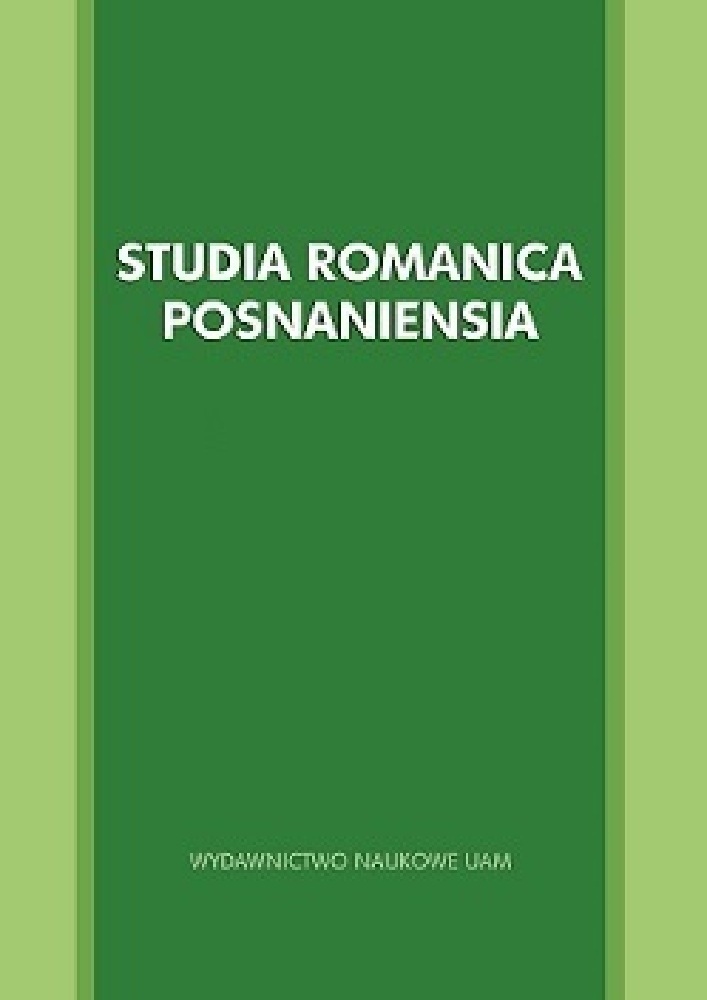Abstrakt
Boccaccio’s Decameron is, as we know, the supreme achievement of the medieval narratio brevis. The art of speaking and, in general, of the proficient use of words, is what distinguishes the “gentile brigata” of ten young men and women who articulate and advance the new ars narrandi. Its role is crucial in many of the novellas in The Decameron: thanks to their capacity to persuade, or rather to manipulate their listeners verbally, many of its male and female protagonists manage to avoid dangers and unpleasant situations, or to get what they want: love, money, or other advantages. Particularly two of the male protagonists, ser Ciappelletto and frate Cipolla, excel others in verbal fraud and mockery. The anonymous protagonist of the third novella of the Third Day is neither as famous nor as examined by critics, even though she is very clever in her rhetorical and theatrical skills. The purpose of this essay is to analyse the strategies of verbal and emotional manipulation which lead her to seduce a “valoroso uomo di mezza età” with the involuntary help of the simple-minded and credulous friar.Bibliografia
Baratto, M. (1970). Realtà e stile nel «Decameron». Vicenza: Neri Pozza.
Boccaccio, G. (1992). Decameron (V. Branca, Ed.). Torino: Einaudi.
Borsellino, N. (1976). Rozzi e intronati. Esperienze e forme di teatro dal «Decameron» al «Candelaio». Roma: Bulzoni.
Borsellino, N. (1989). La tradizione del comico. L’eros, l’osceno, la beffa nella letteratura italiana da Dante a Belli. Milano: Garzanti.
Freedman, A. (1975-1976). Il cavallo del Boccaccio: fonte, struttura e funzione della metanovella di madonna Oretta. Studi sul Boccaccio, IX, 225-241.
Mouchet, V. (Ed.) (2008). Il Novellino. Milano: BUR.
Picone, M. (1993). Il «Decameron». In F. Brioschi, C. Di Girolamo (Eds.), Manuale di letteratura italiana. Storia per generi e problemi, I: Dalle origini alla fine del Quattrocento (pp. 625-654). Torino: Bollati Boringhieri.
Picone, M. (2004a). Il «Decameron» come macrotesto: il problema della cornice. In M. Picone, M. Mesirca (Eds.), Lectura Boccaccii Turicensis. Introduzione al «Decameron» (pp. 9-31). Firenze: Cesati.
Picone, M. (2004b). Il principio del novellare: la Prima Giornata. In M. Picone, M. Mesirca (Eds.), Lectura Boccaccii Turicensis. Introduzione al «Decameron» (pp. 57-78). Firenze: Cesati.
Stewart, P. D. (1986). La novella di madonna Oretta e le due parti del «Decameron». In P. D. Stewart, Retorica e mimica nel «Decameron» e nella commedia del Cinquecento (pp. 19-38). Firenze: Olschki.
Usher, J. (2004). Industria e acquisto erotico: la Terza Giornata. In M. Picone, M. Mesirca (Eds.), Lectura Boccaccii Turicensis. Introduzione al «Decameron» (pp. 99-114). Firenze: Cesati.
Licencja
- Autor oświadcza, że przysługują mu osobiste i majątkowe prawa autorskie do Utworu oraz że nie są one ograniczone w zakresie objętym niniejszą Umową, oraz że utwór jest dziełem oryginalnym i nie narusza majątkowych lub osobistych praw autorskich innych osób.
- Autor udziela Uniwersytetowi im. Adama Mickiewicza w Poznaniu niewyłącznej i nieodpłatnej licencji na korzystanie z Utworu bez ograniczeń terytorialnych i przez czas nieokreślony na następujących polach eksploatacji:
2.1. wytwarzanie określoną techniką egzemplarzy Utworu, w tym techniką drukarską, reprograficzną, zapisu magnetycznego oraz techniką cyfrową;
2.2. wprowadzanie do obrotu, użyczenie lub najem oryginału albo egzemplarzy Utworu;
2.3. publiczne wykonanie, wystawienie, wyświetlenie, odtworzenie oraz nadawanie i reemitowanie, a także publiczne udostępnianie Utworu w taki sposób, aby każdy mógł mieć do niego dostęp w miejscu i w czasie przez siebie wybranym;
2.4. włączenie Utworu w skład utworu zbiorowego;
2.5. wprowadzanie Utworu w postacie elektronicznej na platformy elektroniczne lub inne wprowadzanie Utworu w postaci elektronicznej do Internetu, Intranetu, Extranetu lub innej sieci;
2.6. rozpowszechnianie Utworu w postaci elektronicznej w Internecie, Intranecie, Extranetu lub innej sieci, w pracy zbiorowej jak również samodzielnie;
2.7. udostępnianie Utworu w wersji elektronicznej w taki sposób, by każdy mógł mieć do niego dostęp w miejscu i w czasie przez siebie wybranym, w szczególności za pośrednictwem Internetu, Intranetu, Extranetu lin innej sieci;
2.8. udostępnianie Utworu zgodnie z wzorcem licencji Attribution-NonCommercial-ShareAlike 4.0 International (CC BY-NC-SA 4.0) lub innej wersji językowej tej licencji lub którejkolwiek późniejszej wersji tej licencji, opublikowanej przez organizację Creative Commons. - Autor zezwala Uniwersytetowi im. Adama Mickiewicza w Poznaniu na:
3.1. nieodpłatne korzystanie i rozporządzanie prawami do opracowań Utworu i tymi opracowaniami.
3.2. wysyłanie metadanych Utworu oraz Utworu do komercyjnych i niekomercyjnych baz danych indeksujących czasopisma. - Autor upoważnia i zobowiązuje Uniwersytet im. Adama Mickiewicza w Poznaniu do udzielania osobom trzecim dalszych licencji (sublicencji) do Utworu oraz do innych materiałów, w tym utworów zależnych lub opracowań zawierających lub powstałych w oparciu o Utwór, przy czym postanowienia takich sublicencji będą tożsame z wzorcem licencji Attribution-NonCommercial-ShareAlike 4.0 International (CC BY-NC-SA 4.0) lub innej wersji językowej tej licencji lub którejkolwiek późniejszej wersji tej licencji, opublikowanej przez organizację Creative Commons Tym samym uprawnia wszystkich zainteresowanych do korzystania z utworu wyłącznie w celach niekomercyjnych pod następującymi warunkami:
4.1. uznanie autorstwa czyli obowiązek podania wraz z rozpowszechnionym utworem informacji, o autorstwie tytule, źródle (odnośniki do oryginalnego utworu, doi) oraz samej licencji;
4.2. na tych samych warunkach, wolno rozpowszechniać utwory zależne jedynie na licencji identycznej to tej, na jakiej udostępniono utwór oryginalny. - Uniwersytet im. Adama Mickiewicza w Poznaniu jest zobowiązany do:
5.1. udostępniania Utworu w taki sposób, aby każdy mógł mieć do niego dostęp w miejscu i w czasie przez siebie wybranym bez ograniczeń technicznych;
5.2. poprawnego informowania osób, którym Utwór będzie udostępniany o udzielonych im sublicencjach w sposób umożliwiający odbiorcom zapoznanie się z nimi.
Pozostałe postanowienia
- Uniwersytet im. Adama Mickiewicza w Poznaniu zachowuje prawo do czasopisma jako całości (układ, forma graficzna, tytuł, projekt okładki, logo itp.).
